 |
||
|
||
| ||
Integrated Canesta Keyboard to be used in mobile devices 2GB DDR DIMM modules from Samsung Electronics Razor: new Pocket PC from Zayo Technologies New 0.13-micron UltraSPARC III Cu 1200 officially announced New 0.13-micron 2.0 GHz Intel Celeron officially announced Hitachi Blinkscan BS20U: "vertical takeoff" and USB 2.0 Integrated Canesta Keyboard to be used in mobile devices In March we reported that Canesta prepared to release "projected" or virtual keyboards, tracking the finger movement near an image, created by a light source. Yesterday the company announced the complete development and volume production readiness. Canesta Keyboard features a microcontroller and two optical parts: the first, Canesta Keyboard Pattern Projector (PP-CK100) projects keyboard image to a random flat surface.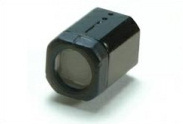 The second part combines Canesta Keyboard Light Source (IR-CK100) and Canesta Keyboard Sensor Module (SM-CK100).
Canesta Keyboard is designed for mobile devices: PDAs, mobile phones and, perhaps, tablet PCs. The company claims that a user, typing 65-80 words per minute with 2.5-3% mistakes on a usual keyboard, will be able to type 45-50 words per minute with 5% mistakes on a virtual keyboard. The company explains this by smaller size of virtual buttons, but currently they work on enlarging it up to 90 mm. Source: EE Times
2GB DDR DIMM modules from Samsung Electronics Samsung Electronics announced shipments of new 2GB DDR SDRAM modules. Or rather new modules debuted in HP ProLiant ML530, ML570 and DL580 servers.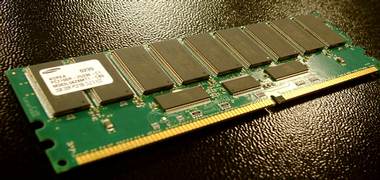 2GB DDR Registered DIMM from Samsung are based on 512 Mbit DDR266 chips. The full memory of HP ProLiant DL580 is 32 chips or 16GB.
Razor: new Pocket PC from Zayo Technologies California Zayo Technologies prepares to release the new Microsoft Pocket PC 2002 PDA — Zayo Razor — in October. New device will feature 400 MHz Intel XScale, 64MB RAM, 32MB Flash ROM, 3.5-inch 240x320 LCD supporting 65536 colors, SD/MMC slot, FIR/SIR port, a mic and a speaker. Built-in batteries will provide 12 hours of operation and won´t require a cradle.
Zayo Razor will also feature button backlight. There will be two versions: A600EXE for $550 and more advanced A600PPC, supplied with CF adapter, CF-PCMCIA adapter and a cradle with a second battery for 20-hour operation. Zayo Razor dimensions are 124.5x73.6x12.3 mm, weight — 155 g.
New 0.13-micron UltraSPARC III Cu 1200 officially announced Today at SunNetwork 2002 Conference Sun Microsystems officially announced new 64-bit UltraSPARC III Cu 1200 made using 0.13-micron process technology and copper conductors. 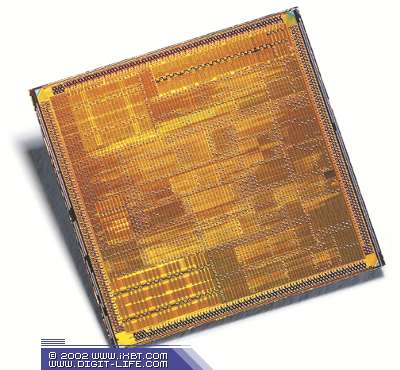 Chips are produced by Sun´s traditional partner Texas Instruments. Due to the new process technology, the energy consumption of new 1.2 GHz UltraSPARC III Cu is reduced from 75 W to 53 W at 14% clock rate growth comparing to 0.15-micron 1.05 GHz predecessor. Texas Instruments launched Sun UltraSPARC III Cu 1200 production in July. Volume shipments of ready systems are expected within 120 days. Currently TI is developing a prototype of new UltraSPARC IV, combining two UltraSparc cores on a single crystal. Besides, the company prepares for 90-nm process technology testing early in 2003, that will be supposedly used for making UltraSparc V.
New 0.13-micron 2.0 GHz Intel Celeron officially announced Today Intel has officially announced 2GHz Celeron made using 0.13-micron process technology and packaged into 478-pin casing. FSB is 400 MHz.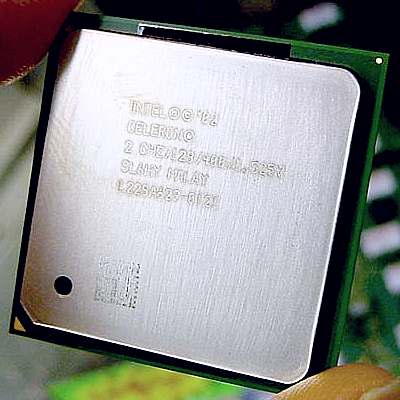 At that the company missed 1.9 GHz version, though have had plans for its production. However, this did only good, as the chip costs $103 (1,000-unit and larger consignments) and will supposedly replace 1.8 GHz version soon. The new Celeron has also appeared for sale before the official press release not only in Tokyo, but also in Canada and Russia. As 0.13-micron technology enables to reduce the cost price by 45% comparing to 0.18-micron technology, Intel gets better pricing and production profitability. Naturally, the main thing is not to let new Socket 478 Celerons take over Pentium 4 market share. Though, according to Taiwanese mass media, referring to PC makers, old Socket 370 Celeron stocks are still significant, so sales of new Socket 478 Celerons will have their space.
Hitachi Blinkscan BS20U: "vertical takeoff" and USB 2.0 A simple idea of mounting a digital camera onto a support to get a variable coverage scanner has at last been commercially realized by Hitachi, that plans to present its interesting Blinkscan BS20U solution in mid-November.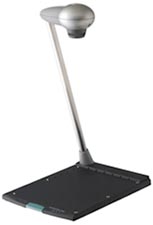 Blinkscan BS20U, resembling an enlarger, features USB 2.0, can be demounted for transporting and is suitable for any scanning purposes due to its high scan speed (12 million pixels in 24-bit mode for 0.8 sec). Another advantage is the possibility of scanning volume materials, including 3D. First, the company plans to ship á4 device, A3 version to follow in December. The scanner is compatible with TWAIN 32, supports progammable scan resolutions: 200/240/300/400 dpi, monochrome 1-bit, monochrome 8-bit (256 grayscale) and full color (24-bit) modes at 500-2300 lux. Read speed is 4 sec per A4 at 200 dpi in monochrome mode and 5 sec in full color mode. Dimensions are: 270x381.5x563 mm, supported OS: Windows 2000/XP. And the approximate price is 298 thousand yens (about $2500).
Write a comment below. No registration needed!
|
Platform · Video · Multimedia · Mobile · Other || About us & Privacy policy · Twitter · Facebook Copyright © Byrds Research & Publishing, Ltd., 1997–2011. All rights reserved. |